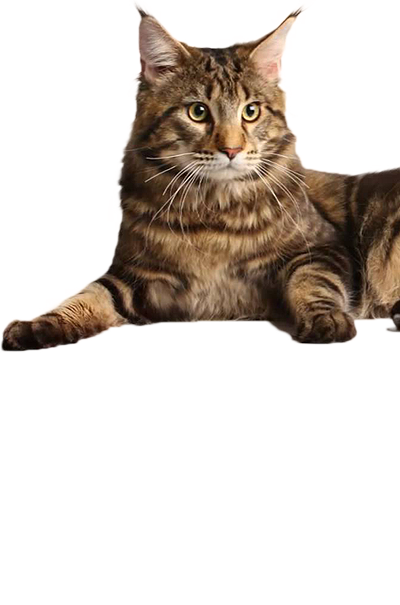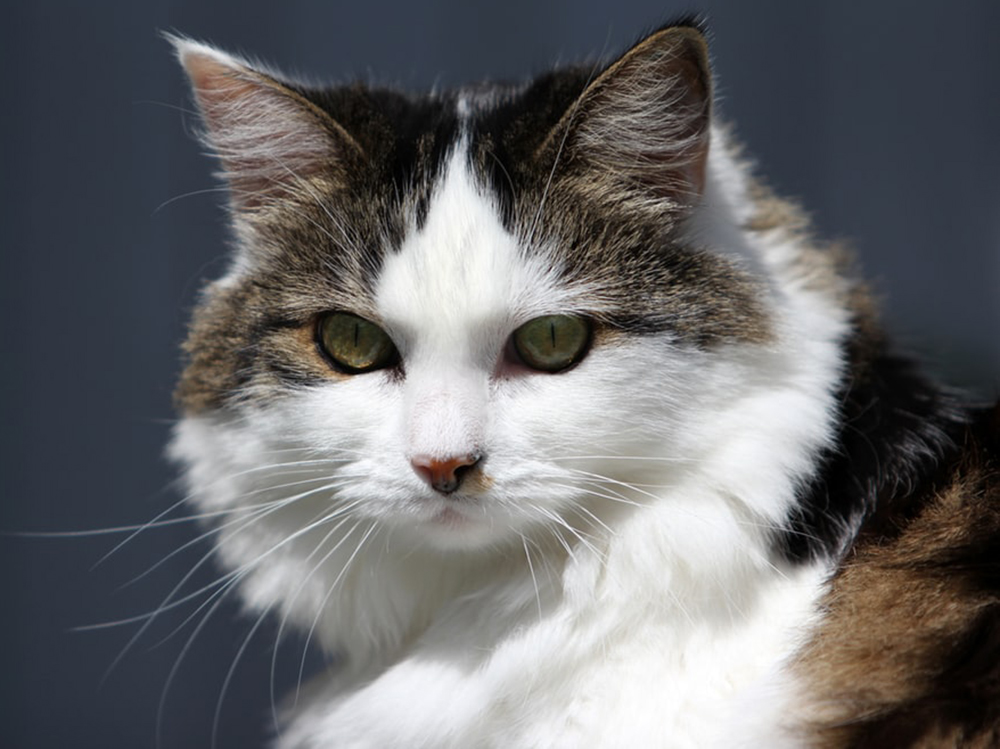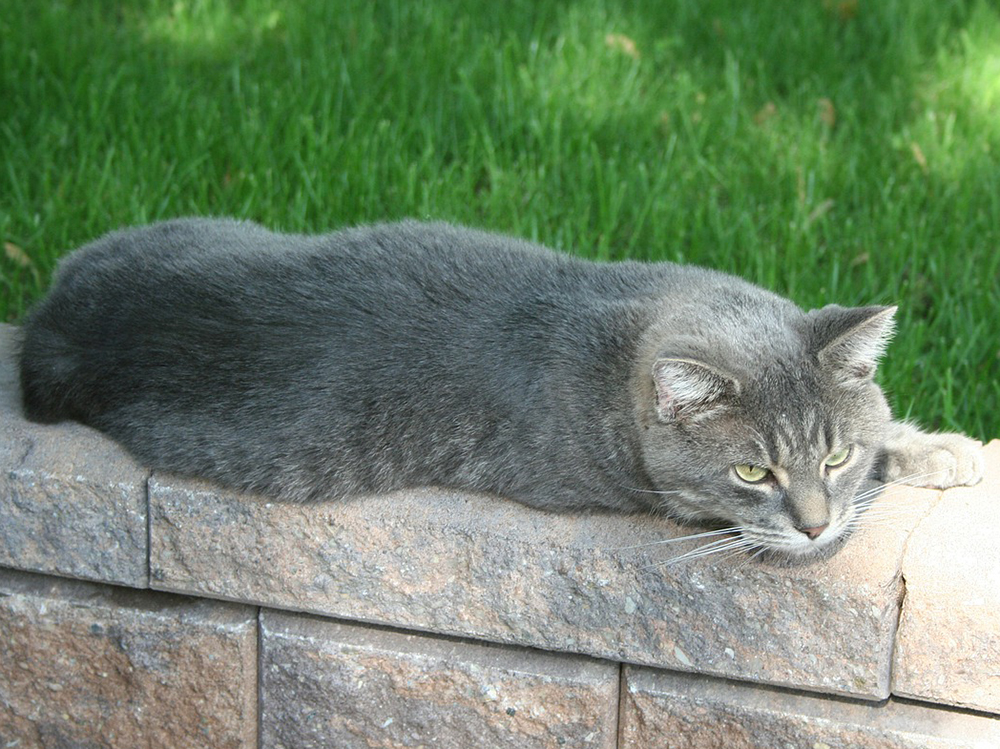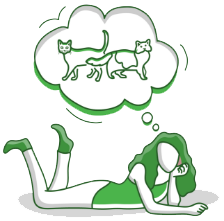
Manx Breed Pictures
Vital Breed Stats
| Weight: | 4 - 5 kg M | 4 - 5 kg F |
| Life Expectancy: | 12 - 15 years |
Breed Characteristics
| Size: |  |
| Grooming: |  |
| Trainability: |  |
| Good with Children: |  |
| Good with other pets: |  |
| Affectionate: |  |
| Active Level: |  |
Give a thumbs up if you love the Manx

0
More About the Breed
History
Amongst the interesting facts about Manx Cats are the stories of how they lost their tails. The more popular legend involved a Manx Cat that was rushing to Noah’s Ark as it was running late. When it began to rain, Noah closed the Ark’s door, which accidentally cut off the last arrival’s tail.
Another legend said that this feline was brought to the Isle of Man, where it comes from, by seafarers. As such, its ancestors are said to be cats from mainland Britain.
Yet another story alleges that these unusual felines were “cabbits” – a crossbreed of a cat and a rabbit. This is likely due to its hopping gait and rounded rump. Though the stories are fascinating, the real origins of this cat remain hazy.
What is certain is that a genetic mutation amongst felines emerged hundreds of years ago in the Isle of Man. It led to the birth of tail-less kittens. As the island’s cat population is very small, the trait became a common feature after generations of inbreeding. As such, the lack of tail is the result of a naturally occurring mutation.
The unique kitties are no less beloved on the Isle of Man. In fact, this cat has been featured in its postage stamps and has been hailed as one of the island’s symbols. Its reputation as an expert mouse hunter and wonderful companion also adds to its appeal.
In the 19th century, some Manx cats were exhibited at one of the first cat shows in the world. It was also amongst the first feline breeds to be included in the Cat Fanciers’ Association’s registry when it was created in 1906.
Appearance and Grooming
The Manx Cat has a very round face with round eyes and round cheeks. The eye colour typically matches its fur’s hue. It has a powerful muzzle and an even bite. Its ears are a bit on the larger side and are positioned at an outward angle.
This feline has a compact body with a broad chest and short back, which is arched from the shoulders to the rump. As such, it has a rather round appearance, thanks also to the absence of an appendage.
Pictures of Manx Cats reveal their tail-less rump and other features that distinguish it from the rest of the feline breeds. Its natural hopping gait makes it stand out even more from the kitty pack.
As mentioned, a natural mutation in the spine caused this breed to have a shortened tail. But not all Manxes are without tails. In fact, there are 4 varieties: rumpy (no tail), riser, stumpy (curved or knotted), and longy (similar to the average cat tail). If the average cat tail has 20 vertebrae, the rumpy Manx only has 1-3.
Manx breeders use all four types in developing this feline to avoid other genetic issues. They never breed 2 rumpies together as this can seriously affect the resulting offspring’s health. It usually leads to death.
Further, this cat has big and very strong hind legs, which compensate for the absence of the tail. The back legs are longer than the front ones, thus making its rear resemble that of a rabbit.
The double-coated Manx Cat can be short-or long-haired. The longer haired variety needs to be brushed more often, about 2-3 times weekly. Its coat colours come in a wide variety of shades and patterns.
Temperament and Intelligence
The cat from the Isle of Man has a personality that makes up for its lack of tail. It is very affectionate and social and is especially playful. As such, the Manx Cat’s personality has been described as dog-like. An intelligent kitty, it will carry toys and open doors with its paws. It can figure things out quickly and will enjoy being taught tricks. It likes to play fetch and engages its humans in conversation using a trilling voice. It can be rather talkative when the mood suits it. However, this gentle feline is shy with strangers. Some Manxes may bond strongly with one family member, particularly the one who has attended to its needs the most.
Being a talented jumper, the Manx likes to leap and can reach impressive heights. As it matures slower than other felines, this friendly cat stays kitten-like longer. It is good with children and thus makes for a fantastic family pet. However, it should be picked up with care as the area near its tail has exposed nerve endings.
Nutrition and Feeding
The Manx Cat should be provided a nutritious diet that fulfils its daily requirements. It should be consistently given the same food following the same feeding times. If there are changes to its diet, those must be done gradually to prevent digestive issues.
The serving portions should depend on the cat’s weight, age, and activity level. Its meals must include at least 25% protein and just 5% carbohydrates.
Health and Exercise
- Arthritis
- Manx Syndrome
- Rump fold intertrigo
- Kinked tails
Cost of Ownership
A well-bred Manx Cat for sale will cost at least £100. Insurance would cost £12 (basic) or £25 (lifetime) monthly on average. Food expenditures may range from £15-£20 each month. For vaccinations, boosters, annual checks and other veterinary costs, pet care costs may total to more than £500 each year.
On average, a Manx owner will spend about £30-£40 per month. The insurance costs can also affect this estimate. For its entire lifetime (8-14 years), the expenses can be as low as £2,880 to as high as £6,720 overall. This estimate does not include the initial costs incurred in acquiring this cat.
Is a Manx Right for You?
- This feline is an affectionate and devoted pet with dog-like traits suitable for families.
- As a skilled hunter, it helps keep the home rodent-free.
- Its tail-less rump has open nerve endings, which require careful handling of this cat.
- The Manx is easy to groom, although the long-haired type should be brushed more often weekly.









